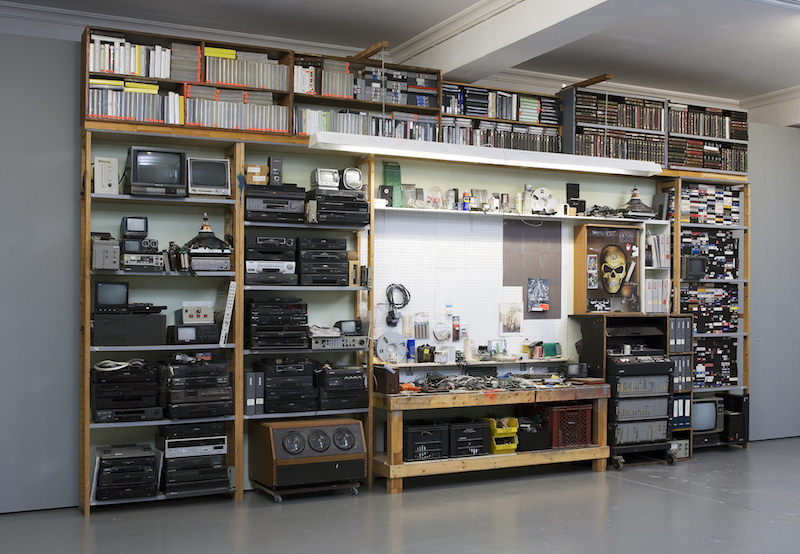 Joep van Liefland © "Video Palace #38 – The Revolutionary Potential of the Outmoded (Storage I)", 2014
Joep van Liefland © "Video Palace #38 – The Revolutionary Potential of the Outmoded (Storage I)", 2014
You might still remember going to your local video store, opening the cover of the rental tape once you were at home, listening to the sound of it being dragged inside the slip of the recorder and then pressing play and forward to start the movie. When the Dutch artist Joep van Liefland first began working with the medium of the videotape, it was 2002 and video was still widely in use. Since then, Joep has exercised experiments with its form and its context: Every detail linked to videotapes – movies, screens, recorders, covers, stores, remote controls – somehow played into his conceptual practice one way or the other. He collected thousands of tapes, now causing him storage problems.
Joep, who used to run one of Berlin's most established project spaces – Autocenter – together with Maik Schierloh from 2001 to 2018, has an industrial studio space in the city's east. Although I had wrongly anticipated it to resemble one of the videotape installations that he made more than fifty of throughout the past years, we sat downstairs surrounded by hundreds of empty tape cases stored in the studio's upper gallery level and had a conversation about his commitment to the video tape.
Anna-Lena Werner: If you look back to your very first videotape installation, what was the drive for making this work?
Joep van Liefland: Today people think about the 80s with nostalgia, but that was not the point back then. It was the beginning of the 2000s and already clear that videotapes will not be the future. Nonetheless, I consumed them, so they were not 'retro' to me. You could still rent them, but there was already DVD. Doing this first installation "Video Palace," I knew I was doing something old, which in perspective of the art context that always celebrates the newest, seemed like a subversive thing to do. Making and watching videos was basically my life. I found an old garage in Berlin and decided to create a video store with my collection of tapes and my own productions.
ALW: Did it function as an actual video store?
JvL: It was in-between: video store, installation –– an obscure place in the city, an intervention.
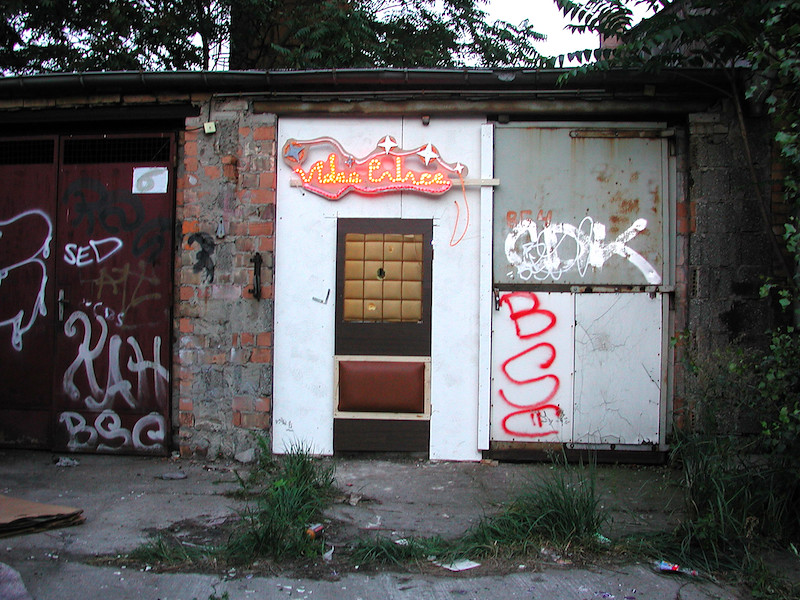
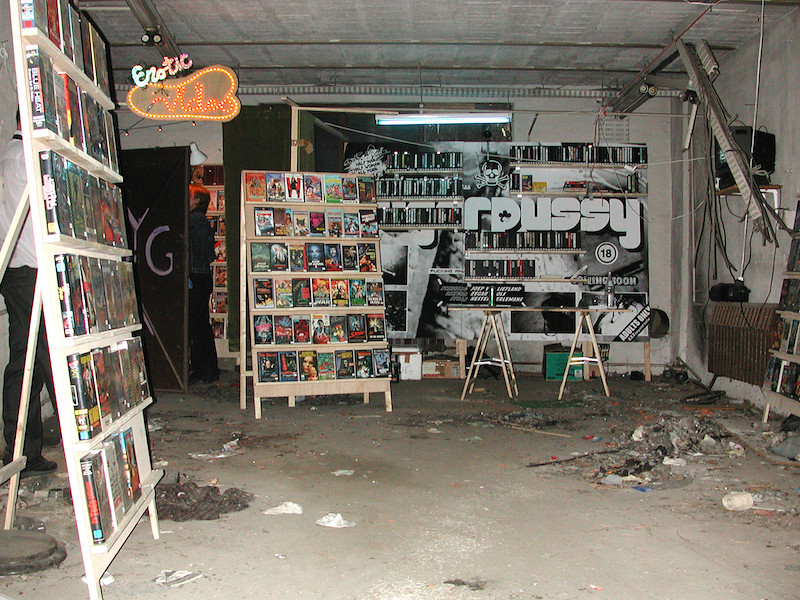
Joep van Liefland © "Video Palace #1", Linienstrasse, Berlin 2002
ALW: Do you have an emotional attachment to videotapes?
JvL: Objects are strange things. I don't know if I can really establish an emotional relationship them.
ALW: But you have a different relation to videotapes as opposed to, say, DVDs. They never show up in your work.
JvL: I have put so much thought into this medium of the videotape over the years that the object changed for me. I came to the conclusion that we are cassettes. I am a biological cassette: a storage of information. I am a copy of my parents. Through time information is stored in us. This is it –– we are cassettes. Videotapes are also time machines: certain events can be stored and moved through time and space. I see video in epic dimensions.
ALW: You could extend these notions to other storage media, like DVD, microchips or the cloud...
JvL: ...true. But then the subversive act is gone. If you are busy with one medium over so many years, the meaning of the medium changes – in the context of society, the art world or my own practice.
ALW: Speaking of storages: you must have thousands of videotapes. Have you seen all the movies?
JvL: Not anymore. It's still my favourite thing to do, but I don't have so much time anymore. Couch-life is good time.
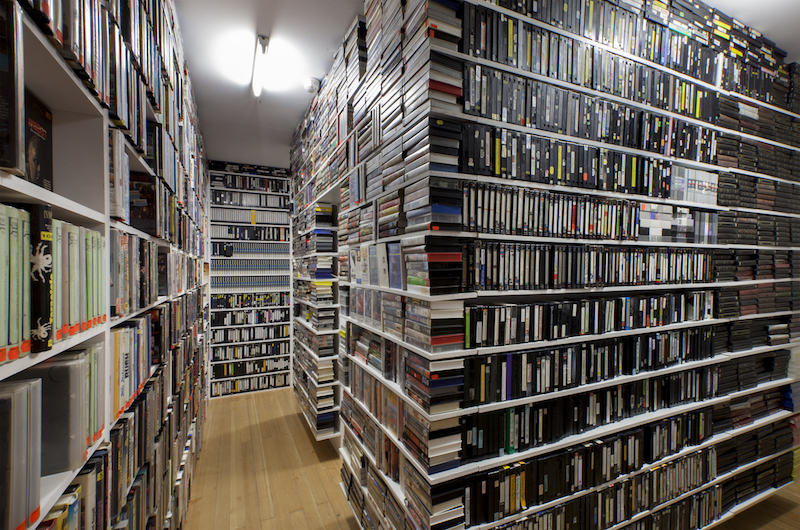
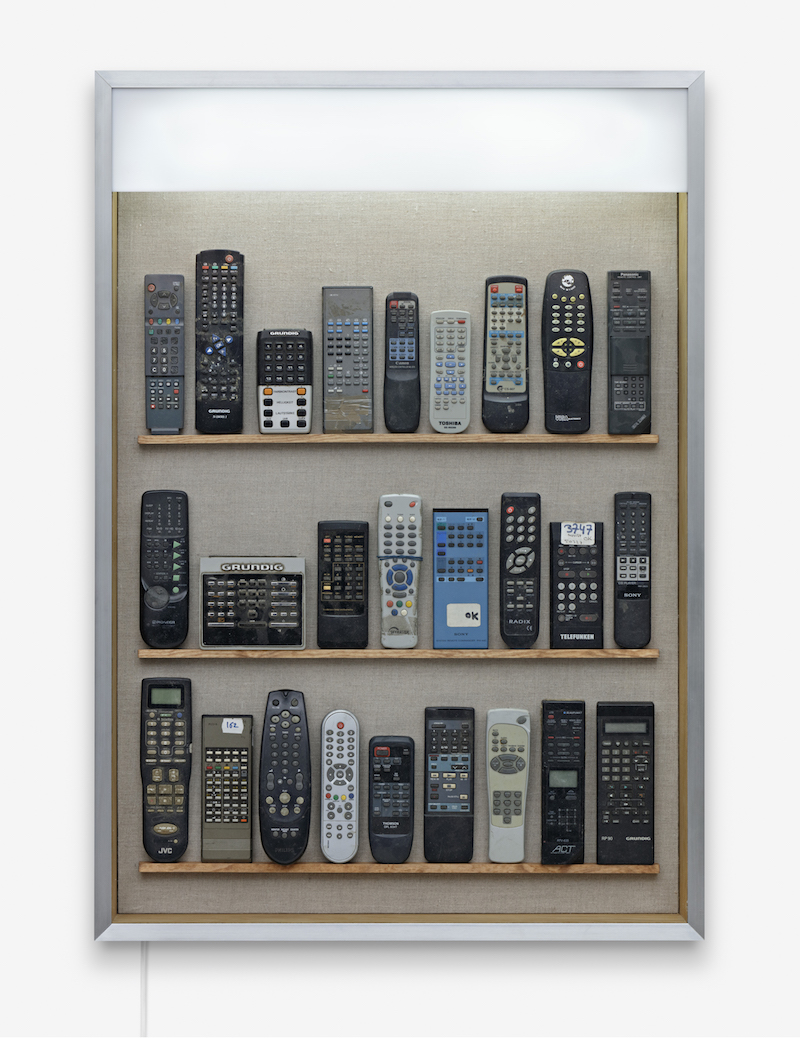 Joep van Liefland © Above: "Video Palace #36 - Shadow Hunter (Archive 1)", 2014, Schirn Kunsthalle / Below: "Skymaster", 2015
Joep van Liefland © Above: "Video Palace #36 - Shadow Hunter (Archive 1)", 2014, Schirn Kunsthalle / Below: "Skymaster", 2015

 Joep van Liefland © Above: "Video Palace #36 - Shadow Hunter (Archive 1)", 2014, Schirn Kunsthalle / Below: "Skymaster", 2015
Joep van Liefland © Above: "Video Palace #36 - Shadow Hunter (Archive 1)", 2014, Schirn Kunsthalle / Below: "Skymaster", 2015
ALW: What kind of stuff do you watch on TV if you have time?
JvL: At the moment I am watching a scripted reality show called "Storage Wars". It's about auctions of abandoned storage spaces in America. There are all kinds of people coming to these auctions and bidding for a storage that they cannot look through before buying it.
ALW: That sounds perfect for you. How do you actually get all those videotapes?
JvL: I don't buy anymore, but last time I bought all the leftovers of a video store in Belgium that had already been out of order for five years. He had still VHS tapes stored somewhere.
ALW: What genres are amongst your collection?
JvL: No genre –– just stupid movies. When I started with this first video store, it was not about good movies, but about meaningless movies, like B-movies. Cultural overproductions. Cultural waste. We live in a production society, in which a need is created. We concentrate on objects that we think are important. But I think the cultural waste and the failed things define us better than products that succeed.
ALW: Like zapping TV instead of watching a specific program?
JvL: Exactly. Displays and screens are quite hypnotising, vibrations of information. This has also affected my work with the medium of video over the years. It has become more abstract. I make paintings and silkscreens with the three RGB colours, the light sources for screens. I am the two-millimetre guy: Before I never found a way to get into painting, but now I use a two-millimetre brush with which I partly paint on the silkscreens that I print. In fact, I have not made installation in the last year, I'm hypnotised in the RGB tunnel. I'm in the zone.
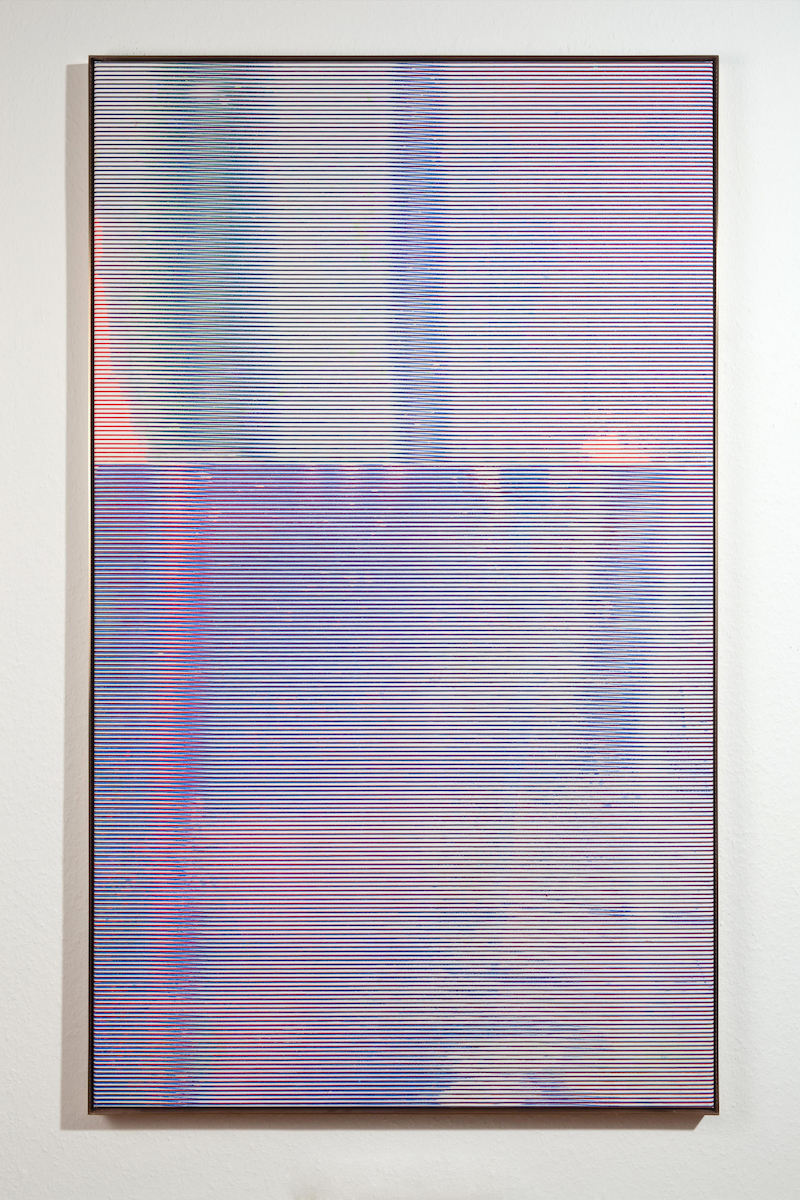

Joep van Liefland © "RGB 3600", 2018
ALW: It seems to me like you do everything with a lot of commitment or maybe even ...
JvL: ... obsession. I think I'm trying to find a path into the picture, or the subject.
ALW: How did you get to silk-screening in the first place?
JvL: I silk-screened the posters for my installations and video productions and from that derived the more abstract silkscreens as I do them now. I used to work in an alternative print shop when I was younger, printing posters for concerts and for political action.
ALW: How were your posters usually related to the films and video installations you made?
JvL: They are quotations, poetry, or abstractions. I made for example a poster for my video production "Donald Judd Faces of Death", which refers to so-called 'shockumentaries' such as "Faces of Death" and fake news in general. I think, as soon as things are mediated, they are not real anymore. It’s a different or a multi-reality.
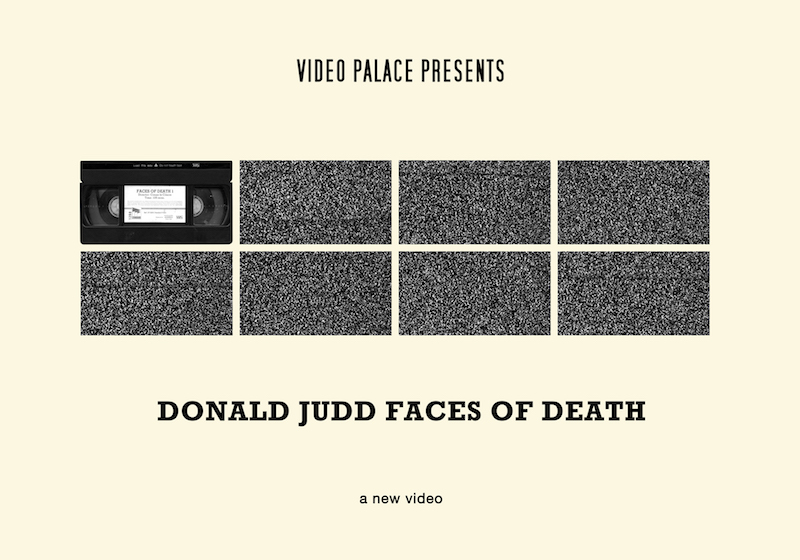

Joep van Liefland © ”Donald Judd Faces of Death", 2008
ALW: "Donald Judd Faces of Death" combines minimalist art and the horror film genre. How does that fit together?
JvL: I think my work derives from two poles: a minimalist and a maximalist pole. Both components are important. I have studied minimalistic objects, which you can still see in my work, but this brutality or explicitness was also very important for me. In the video production "Donald Judd Faces of Death" both are combined: Judd presents minimalism, while faces of death presents the maximalist pole. It is a video without an image or sound, nothing. I started to reduce my videos, no image, no sound, not longer than 2 minutes.
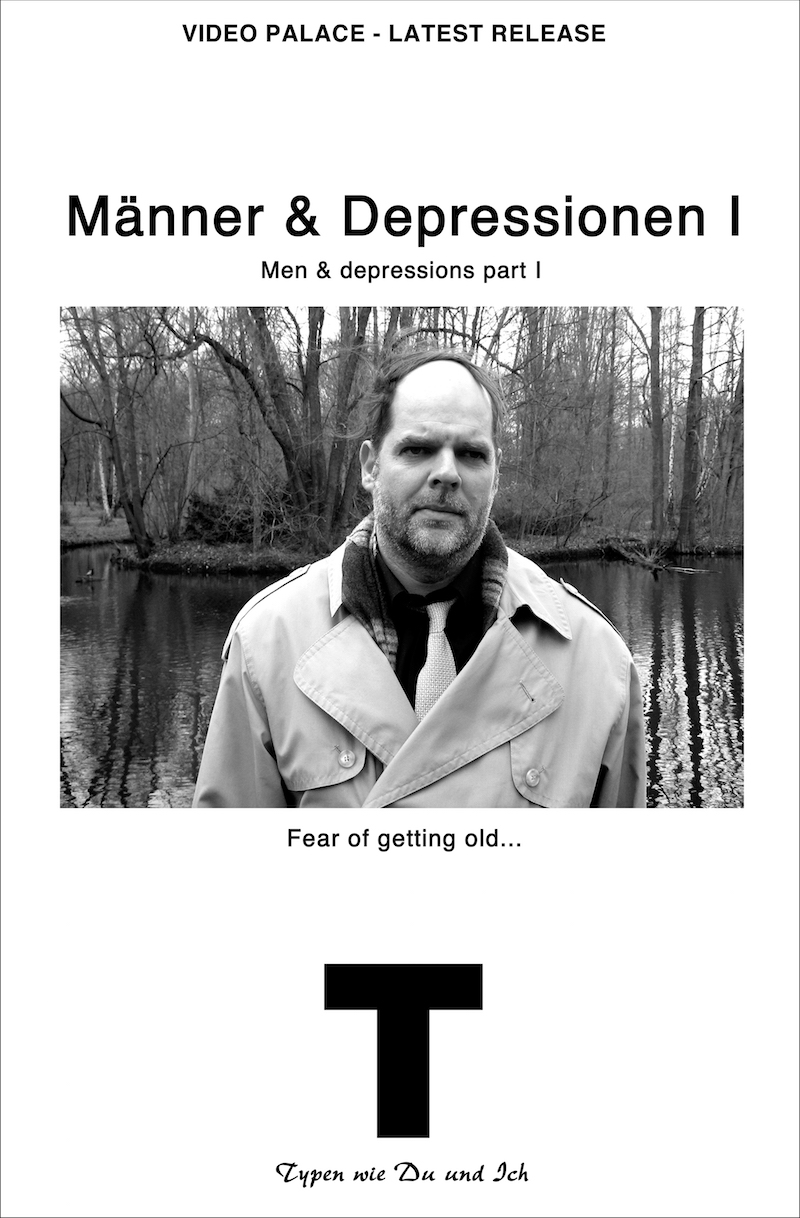 Joep van Liefland © "Men and Depressions I", 2009
Joep van Liefland © "Men and Depressions I", 2009
ALW: You made two films called "Men and Depressions" – what are they about?
JvL: I had a collection of schooling tapes containing documentations of group therapy sessions. In my films, I wanted to do my own perspective of this feeling. You see a man walking through the streets, nothing really happens. It's about male identity, about me being a man watching video on the couch.
ALW: Why did you stop making videos? Did you reduce it to nothingness?
JvL: I don't really know. I thought about loops. The last video I made showed the quote "The End - is - the beginning" in a sequence, combined with the image of a test-screen. So, that's it: I'm done. I have worked myself through it.
ALW: Sitting here, looking up to your studio's upper level storage, we are surrounded by transparent, empty videotape cases. They look like a cloud up there. Is this the next step of minimalizing or reducing the videotape and the video store?
JvL: Yes, I have done something similar before, staging an empty video shop, a space with empty shelves and a dirty carpet in "Video Palace #34 – Le Discours des Médias" (2012) in Glasgow.
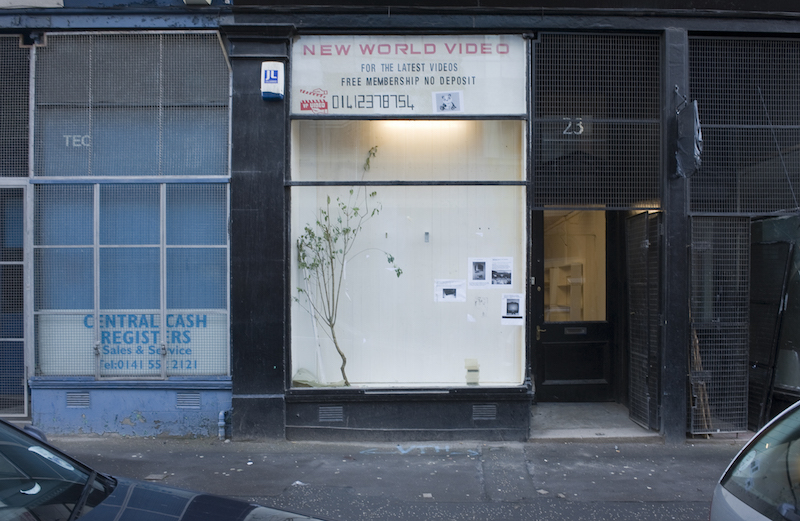
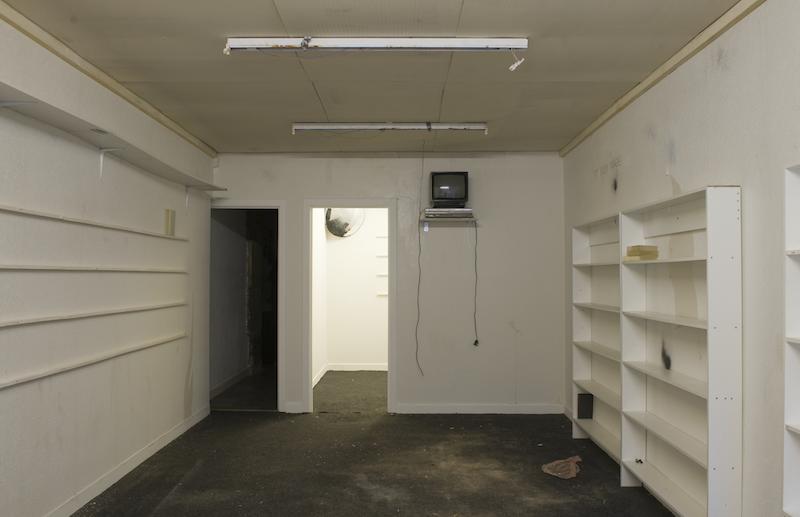


Joep van Liefland © "Video Palace #34 - Le Discours des Médias", 2012, Glasgow
ALW: When you built architectures for your installations, did you have an original architecture from a specific video store in the back of your mind?
JvL: No, they are my own architectures, but I take many pictures of video shops for inspiration. In Kreuzberg there was a great video shop, which used to be a record shop before. He showed me his basement storage, which really impressed me. But there are no more video shops and I also more or less stopped building them. My installations are different now.
ALW: In your piece "Video Palace #44 – The Hidden Universe" (2017) for the Transmediale in Berlin you can really see this change. The videos act as walls, forming a huge accessible rectangle.
JvL: Yes, they have become walls. The black colour from the uncovered tapes added an almost digital feel and the organisation of those tapes looked like a monolith that fell over from space, like in "2001: A Space Odysee". Like in the movie, I like to think of it as an object you cannot fully know.
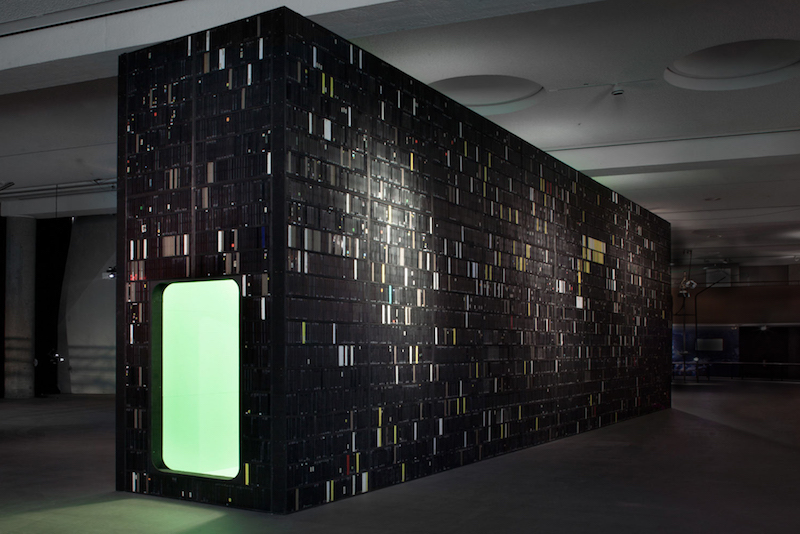 Joep van Liefland © "Video Palace #44 – The Hidden Universe", 2017, Transmediale, Haus der Kulturen der Welt, Berlin
Joep van Liefland © "Video Palace #44 – The Hidden Universe", 2017, Transmediale, Haus der Kulturen der Welt, Berlin
 Joep van Liefland © "Video Palace #44 – The Hidden Universe", 2017, Transmediale, Haus der Kulturen der Welt, Berlin
Joep van Liefland © "Video Palace #44 – The Hidden Universe", 2017, Transmediale, Haus der Kulturen der Welt, Berlin
ALW: In many installations, like "Video Palace #38 – The Revolutionary Potential of the Outmoded (Storage I)", you also included objects related to tapes, such as video players, recorders and small screens. Are you recycling the object of the videotape?
JvL: No, I don't think it's recycling but rather rethinking. I could take a new object, but rather I rethink the old object. When I do collages, for example, they are like mental maps of the thoughts I have about this medium.
ALW: Other installations and wall objects include remote controls, videotape cases and many other things. Everything seems to revolve around the tape, which is in the centre of all this. Are the other objects accessories to you, or do they have another value?
JvL: They are aspects or inter-mediators. Remote controls, for example – to say it in Marshall McLuhan's terms – are extensions of the human body, intermediating between the screen and the person. If you look at them closely, like here in this box, they are really used and you can see a human imprint on these objects. These objects function as signs in a personal techno-cosmology.
 Joep van Liefland © "Information 6", 2016 (bronze)
Joep van Liefland © "Information 6", 2016 (bronze)
 Joep van Liefland © "Information 6", 2016 (bronze)
Joep van Liefland © "Information 6", 2016 (bronze)
ALW: Sometimes you re-contextualise, as you say, aspects into more abstract and minimalist material for sculptural work. What do they then mean to you, other than being pure building material?
JvL: I like to empty them out of meaning. I did this black painted bronze sculpture that looked like a staple of real videotapes. Doing tapes in bronze means they become fossils for the future, since the material is preserved forever. Thinking about cultural waste again, I like to believe that videotapes would disappear soon if it wasn't for me. They are human remains.
ALW: Do you think there will come the day when you won't work with videotapes anymore?
JvL: That could be – when I'm done, I'm really done.
joepvanliefland.com
Current
Joep van Liefland
Photon Psycho
GNYP Gallery, Berlin
26 Oct – 30 Dec 2018
joepvanliefland.com
Current
Joep van Liefland
Photon Psycho
GNYP Gallery, Berlin
26 Oct – 30 Dec 2018
